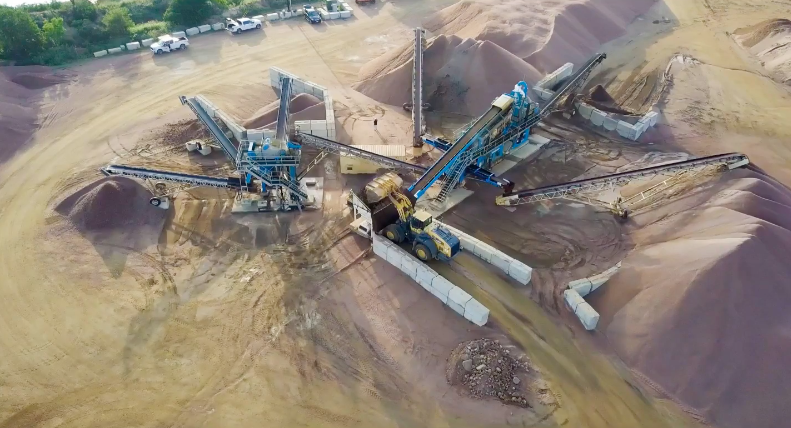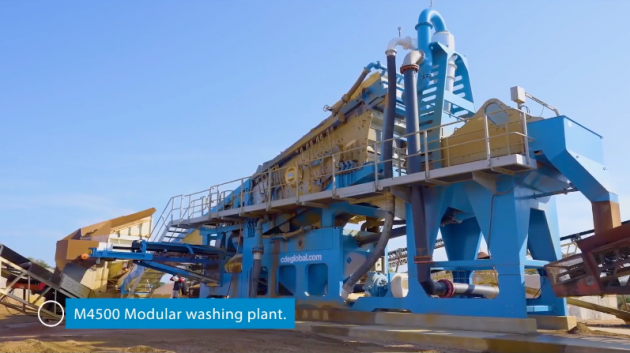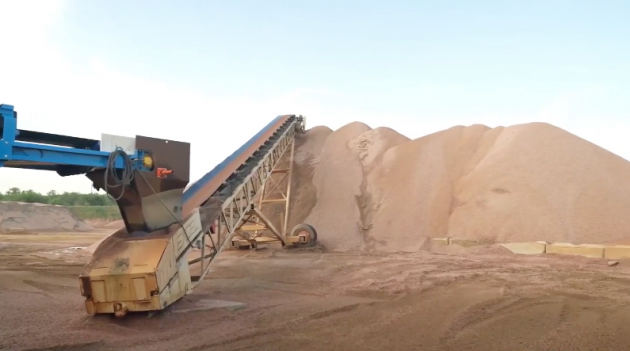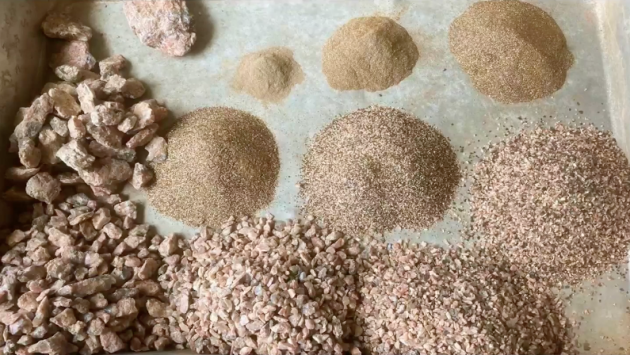
Features
Aggregates
Technology
Running reliably: Wash plant upgrades result in increased aggregates production
CDE overhauls wet processing equipment at a Texas sand and aggregates plant owned by Collier Materials
September 28, 2021 By Kristina Urquhart
 The Collier Materials plant in Marble Falls, Texas, features a CDE washing and classification system. Photo: CDE
The Collier Materials plant in Marble Falls, Texas, features a CDE washing and classification system. Photo: CDE An overhaul of the washing equipment at a sand and aggregates plant has led to cost and labour savings for one Texas-based producer.
Collier Materials worked with CDE Global on the equipment upgrades at one of its locations in Marble Falls, Texas, which allowed the company to consolidate two existing plants into one.
The wet processing plant now moves 300 tons of granite per hour at 150 total horsepower using the one of the M4500 models from CDE’s M-Series integrated screening and classification plant line.
Decomposed Texas pink granite is the feed material of choice for Collier Materials. In slab form, the material is frequently found in countertops and in building construction. But what the company uses has been naturally sized, so there is no need for an onsite crushing plant.
The M4500 produces two aggregates and a sand, while a secondary setup produces another three aggregates. Collier Materials’ products are used in roads and pathways, in precast concrete, and in agricultural and landscaping applications as a soil enhancer.
In a Sep. 14 webinar, CDE’s business development manager Tom Wick took viewers on a virtual tour of the wash plant.
“[The plant manager] is able to run the plant and two other plants at the same time because of the reliability,” noted Wick.
“I’ve been to this plant in the middle of the day, and the only person at the plant is the loader operator. This plant is running without anybody keeping a real close eye on it.”

The CDE M4500 washing plant at the Collier Materials plant in Marble Falls, Texas. Photo: CDE
Main wash plant
A loader brings decomposed granite to a hopper, then a feed conveyor transfers the material to the M4500 main washing plant, where it is rinsed on an Infinity Prograde screen (P3-108).
The six-by-20-foot, three-deck screen boasts a 30-horsepower motor and what CDE calls “Trilogy” construction, meaning the sidewalls are comprised of an internal structural steel surrounded by inner and outer cladding to prolong product life.
“This is all galvanized, all bolted, no welds – welding is a place for you to get a crack,” Wick explained.
Material that drops through the half-inch top deck arrives at the middle deck, where it is sized into half-inch to quarter-inch aggregate and conveyed to stockpile.
Anything smaller falls down to the 1.4-millimetre bottom deck, where aggregate at a quarter inch to 14 mesh is washed again and sent to stockpile.

Stockpile at Collier Materials in Marble Falls, Texas. Photo: CDE
Sand classification system
Material sized to less than 14 mesh funnels from that bottom deck into a sump, which pumps into CDE’s EvoWash sand classification and dewatering system. The EvoWash, designed to customer specifications, is topped by a hydrocyclone washer fitted with a natural rubber lining that removes silt.
The hydrocyclone offers some advantages over a dewatering screw press, which sees some sand lost to overflow at the back of the screw, said Wick.
With a hydrocyclone, “you’re efficiently producing all the sand that your feed material is providing you,” he said. Depending on the efficiency of the equipment being replaced by a hydrocyclone, the production increase could be between 10 and 50 per cent.
At Collier Materials, the 25-inch hydrocyclone expels wastewater out the top as it washes the sand before depositing it onto a six-by-10-foot Infinity D1-64 dewatering screen at 100 tons per hour (though this particular screen model is capable of processing up to 220 tons per hour, the company’s order book currently only requires 100 tons).
Once the minus-14-mesh sand is dewatered to 12 to 15 per cent moisture, it’s conveyed to a stockpile and is ready to go to market.
“On a lot of days, there’s hardly any pile here. Like today, you can see the loader and the trucks are taking this sand away pretty much as fast as they make it,” said Wick.

Products at the Collier Materials Marble Falls plant. Photo: CDE
Secondary screening area
Back at the top deck of the P3-108 screen on the main wash plant, anything larger than the half-inch screen is transferred via conveyor to a secondary area onsite, where it is washed again in a feed box.
From there, the material is deposited onto CDE’s Infinity H2-60 horizontal sizing screen, which features the same Trilogy construction as the P3-108 screen and operates at 20 horsepower.
The H2-60 is comprised of two decks with a split sump that funnels out products to three different stockpiles: a two-plus-inch oversize aggregate off the top deck, a two- to one-inch aggregate off the bottom deck, and a one-inch to four-mesh aggregate off the bottom deck.
Water usage
The Marble Falls plant draws its water from onsite pits. Since the feed material is mostly free of clay, it can be rinsed clean rather than scrubbed and thus the entire line uses only 2,000 gallons of clean water per minute, said Wick. Wastewater from the hydrocyclone and the sump pumps is piped out to a settling basin where the silt falls to the bottom.
For customers who don’t have water access, CDE can establish an on-site water recycling plant. “We would produce a sludge off the bottom of the thickener that would go back to a pond or even to a centrifuge, or a filter press, to get rid of the rest of the water,” explained Wick.
“In that case, you’d recycle nine per cent of your water.”
Increased production
Up to 100 trucks move through the Collier Materials Marble Falls plant every day, with each truck’s daily load clocking in at 24 tons.
In a video shared during the webinar, Manuel Cortez, plant manager for Collier Materials, said the company has been able to cut down on labour and overhead costs because of the processing plant’s efficiency.
“It’s changed from running eight hours a day on a 12-hour day to running 11 hours a day on 12-hour day. Our production has increased tremendously,” shared Cortez.
“The quality of our wash material and the cleanliness, production-wise – it just was amazingly different from what we were used to.”
Print this page